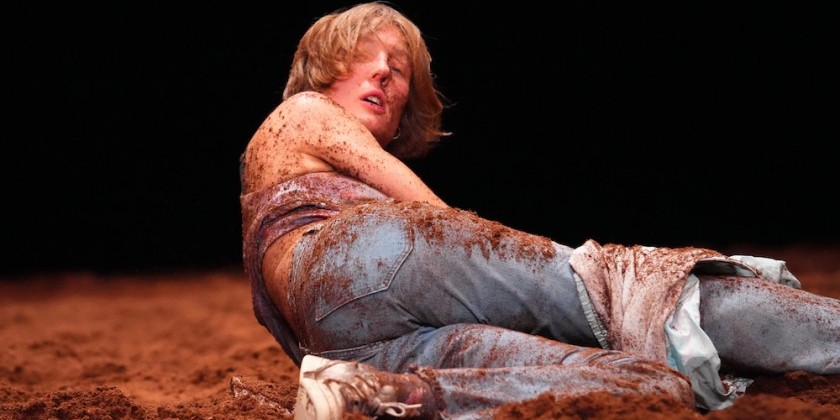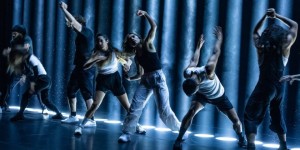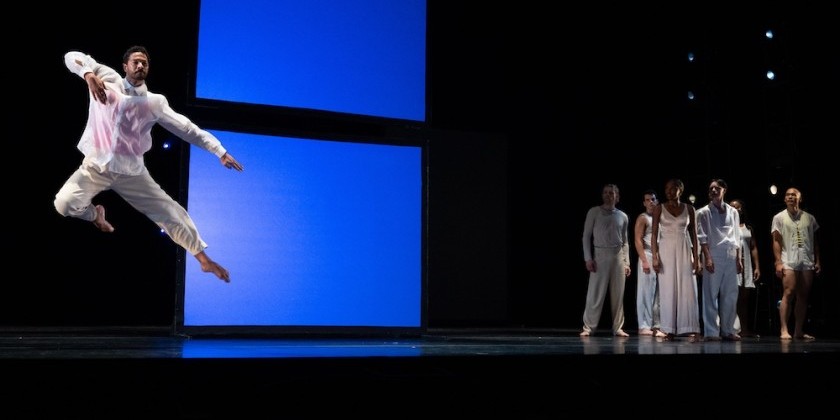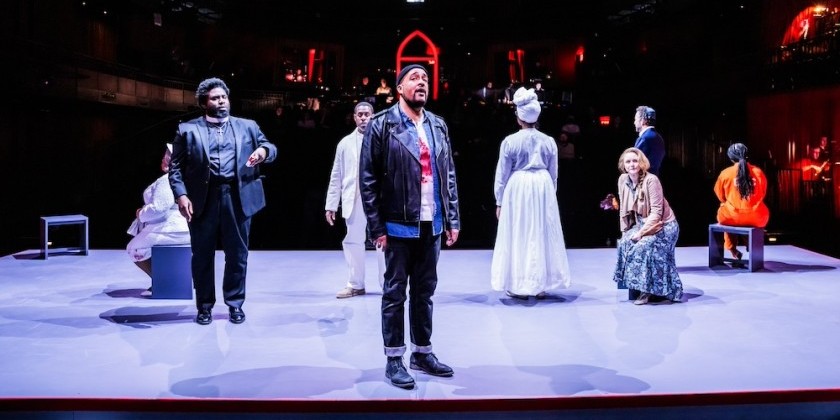IMPRESSIONS: Gisèle Vienne's "CROWD" Presented by BAM in association with FIAF’s Crossing The Line Festival

Conception, choreography, and scenography: Gisèle Vienne
Music: Underground Resistance, KTL, Vapour Space, DJ Rolando, Drexciya, the Martian, and others
Sound design: Peter Rehberg and Stephen O'Malley
Lighting design: Patrick Riou
Dramaturgy: Gisèle Vienne and Dennis Cooper
Featuring Artists: Philip Berlin, Marine Chesnais, Sylvain Decloitre, Sophie Demeyer, Vincent Dupuy, Massimo Fusco, Rehin Hollant, Oskar Landström, Theo Livesey, Louise Perming, Katia Petrowick, Jonathan Schatz, Henrietta Wallberg and Tyra Wigg (alternately with Lucas Bassereau, Nuria Guiu Sagarra, Georges Labbat and Linn Ragnarsson)
Thursday October 15th 2022
In CROWD (2017), choreographed, conceived, and designed by Franco-Austrian artist Gisèle Vienne, we witness a group gathering for a rave in the wilds of a forest. Mulch covers the stage and eerie lighting suggests a desolate location illuminated only by the moon. Dressed in an array of jeans, shorts, sweats, flannels, and jackets, carrying back packs, cigarettes, and booze — these folks, friends and strangers, are ready for revelry.

Some look not old enough to be out this late. Standing off to the side, this group laughs hard, and too easily. They double over and spit out their drinks sloppily, consumed by the awkwardness of “wasted' first-timers. Others have certainly been here before. The woman who instigates and concludes the work seems perfectly at home in dark spaces. At first glance, a hooded-jacket hides her face. All we notice are her stand-out silvery sneakers and her deliberately slow entrance. As she glides forward, dream-like, we have plenty of time to wonder about her role.
Vienne trifles with time and our perception in CROWD. Against the driving beat of club music, and sometimes the blaring wail of a siren, or the persistent ticking of a clock, she isolates her dancers’ movements — accelerating, freezing, and breaking down action, as if under a strobe light. Here, the strobe effect gives us a microscope, a means to analyze the anatomy of emotions and the shifting the architecture of this debauched assembly.

The crowd coalesces, greeting each other with stop-motion abandon. Hungrily, they welcome and exchange one partner for another, and many others. They tumble into the dirt, rolling and rising up, kissing, grabbing, and careening into and away from groups, pairings, and moments of isolation.

As gestures are dissected and delivered—inch by inch, step by step—we come to realize that all is not well in the woods. Are those ravers leaning into one another or pushing? Is that tall dude eagerly boisterous or dangerous? A woman in a green rain jacket , appears to be crying and covered in blood (?). Later the same woman, sans raincoat, wanders off to another body, another indulgence. Did something horrible happen or not? The gal who started the party flicks her tongue - her mission: to see how many of the group she can devour. Water is thrown around, soda is thrown, someone digs into the detritus and a gun goes off, or at least it sounds like it. But was a crime committed?

There’s mastery to this work. Designing the space to manipulate time so we can watch it progress incrementally; training our focus on a single dancer within a chaotic group without a clear star or defined chorus; traveling groups from point a to b almost imperceptibly, without grande “dancey, dance” (or anything that resembles dance) steps; the control and precision it takes for each artist to move gradually and expressively, degree by degree, through a wide and conflicting range of passions… well, all of that is powerful stuff. In other words, the artists’ involved all “got mad skills.” Still, I was relieved when the piece was over and the revelers/victims/perpetrators left the stage. I simply couldn’t take anymore.

Vienne's CROWD reminds us of the remarkably thin line between pleasure and pain, revelry and rot. A smile can be an expression of unbridled joy or a sinister invitation. Tussling can be, at once, sensual and vicious. Laughter and tears often sound and look the same, don’t they? Broken down into micro-moments one is forced to consider what it is we are receiving, what is real. Can we ever truly trust our observations or the motives of others?













